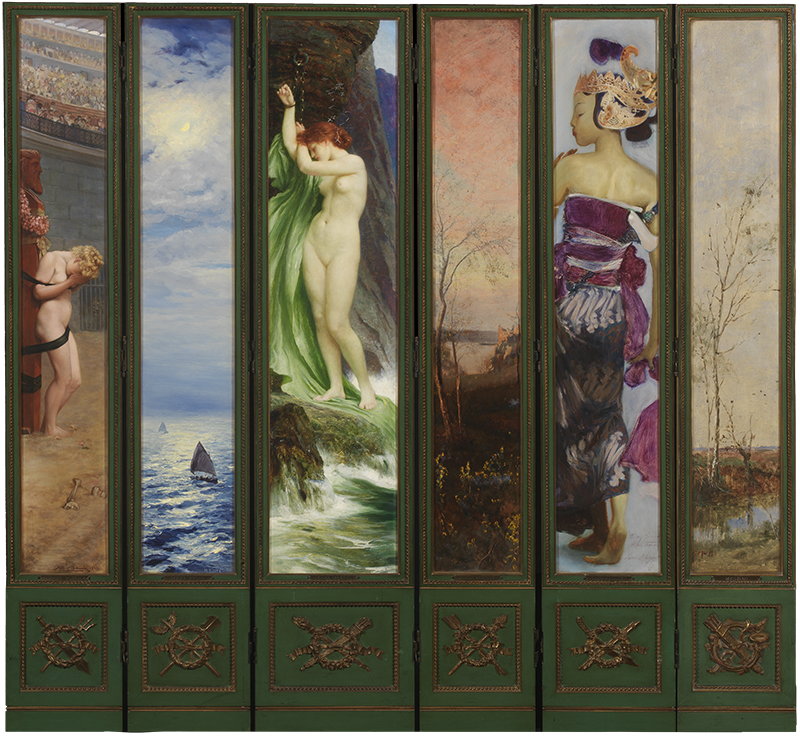Sir Lawrence Alma-Tadema
The painter Lawrence Alma-Tadema (1836–1912) was born in Dronryp, in the Netherlands. In the 1850s, Lawrence moved to Belgium, where he studied Dutch and Flemish art at the Royal Academy of Antwerp, later becoming a teacher at the same institution. Alma-Tadema worked with several Belgian artists of note before becoming established as a painter in his own right.
After his wedding, the artist travelled to Italy, visiting cities such as Florence, Rome, Naples and the ruins of Pompeii. The art he discovered there had a strong influence on his work, with landscapes from Greek and Roman antiquity gaining prominence in his painting. In the late 1860s, Lawrence lost his young wife and shortly afterwards developed an illness that Belgian doctors were unable to diagnose, which led him to move to England.
The outbreak of the Franco-Prussian War and a new romance contributed to him deciding to live there indefinitely. Alma-Tadema found great success in his adopted country, befriending the circle of pre-Raphaelites, who influenced his painting. In 1899, the artist was knighted by Queen Victoria, a rare distinction for a citizen who hadn’t been born in the United Kingdom.
His work evolved towards the design of stage sets and costumes, as well as furniture pieces. The artist devoted a great deal of time to decorating his family home, inspired by a Pompeii villa.

In 1913, Calouste Gulbenkian, an admirer of Alma-Tadema’s work, acquired six paintings that had been part of a group of forty-five that decorated the hall of the Dutch artist’s house in London. Alma-Tadema had commissioned these paintings from friends, Frank Dicksee (Andromeda), Henry Moore (Moonlight on the Sea), John Singer Sargent (Javanese Dancer), David Murray (Sunset), Herbert Gustave Schmalz (Christian Martyr) and Sientje Mesdag-van Houten (Drenthe Landscape). In the work Javanese Dancer, a common theme in John Singer Sargent’s work, the painter’s dedication to Alma-Tadema is visible: ‘To my friend Alma Tadema.’
The works purchased by Gulbenkian were mounted on a screen specially designed for the purpose.
Collection of Stories
Where have the artworks been, before being acquired by Calouste Gulbenkian? Who were their authors and their protagonists? What curiosities do they hide? In this series, discover the various stories behind the Museum's collection.

